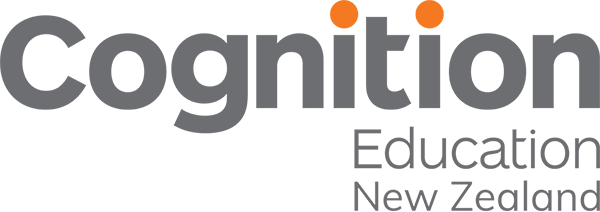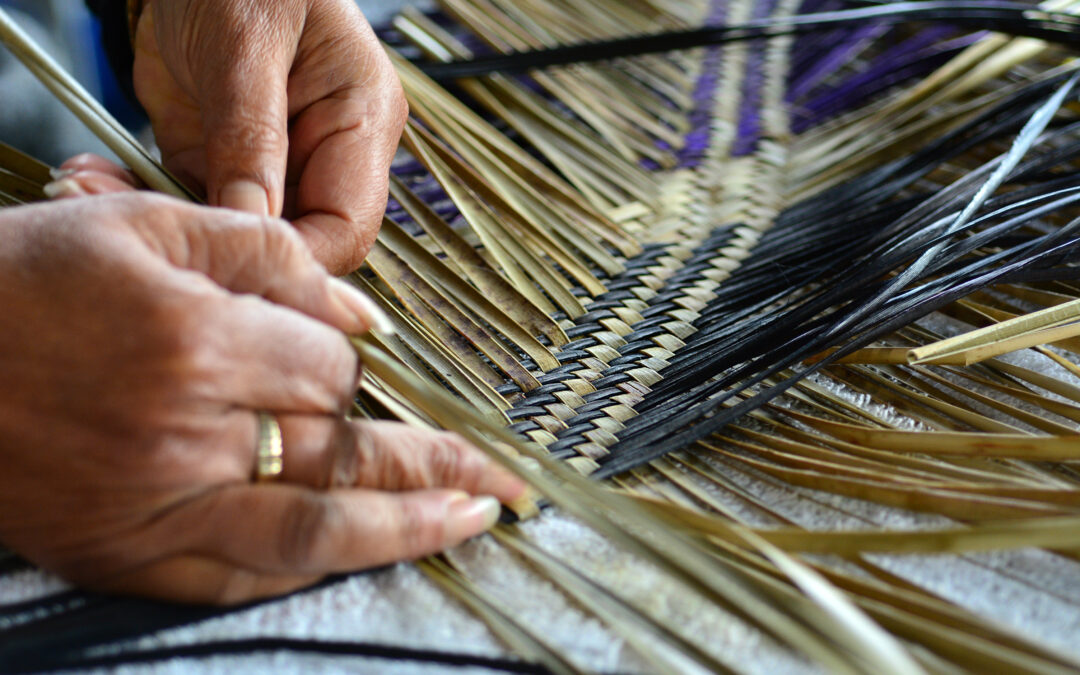“Weaving” learning across Te Mātaiaho (the refreshed curriculum) to understand, know and do.
Weaving can be seen as a way of knowing the world (both social and material) and having a sense of belonging. Weaving is an art-form that communicates history, geneology and connection to place. – Pacific voices in Te whariki (MOE)
While the framework for Te Mātaiaho (the refreshed curriculum) intends to develop a strong grounding and educational foundation based on the needs of ākonga (learners), it also seeks horizons…progressional aspirations that serve people well for their futures, by weaving various components together. It includes a whakapapa to honour the past, a refreshed purpose statement and vision for young people that applies the treaty principles to learning contexts that matter to students. Weaving and hitching different strands, concepts and ideas, as well as competencies and values, are integral to the refresh of the New Zealand curriculum.
Just as there are many types of weaving of materials, there is an array of approaches about how learning can be affected to enhance understanding, knowing, and doing. Considering a range of different approaches to the concept of weaving content, ideas, skills and capabilities, can support teachers and leaders to plan, design and implement their localized curriculum. The question is: what exactly do we mean by weaving and how does this apply to curriculum redesign?
Weaving
Weaving learning across the curriculum is not a new concept. In fact, learning holistically and acknowledging the relationships among all things, was very much a part of early Greek education and continues to be important today for weaving understanding, knowing, and doing. For example, Socrates developed a dialectical approach, Plato promoted diversified connected education for developing inborn talents whereas Aristotle advocated for developing moral character through developing persistence and practice, often missed when the outcomes are for specific skill development. In the 1900s, Dewey’s work (1910, 1913) and other writers such as Lave and Wenger (1991) advocated for situating and linking learning to localized experiences i.e. weaving content acquisition with relevant experiences. In 2017, Rosemary Hipkins contributed a paper related to weaving key competencies within the previous NZ Curriculum model, entitled Weaving a coherent curriculum: how the idea of “capabilities” can help. These background sources have supported the concept of weaving curriculum for some time. However, given weaving is emphasized in the refreshed curriculum, we need to explore in more depth how to “weave” for the most effective outcomes. This will help identify the “what” and “how” when designing and implementing curriculum over the next 5 years.
Gray (2013) indicates that there’s a range of approaches for integrating curriculum. These approaches span using siloed or separate subjects and topics for curriculum design, through to teaching separate disciplinary knowledge while also making connections across areas much more explicit, through to more interdisciplinary, integrated, or integrative approaches, that also include skills and capabilities. Each approach has different levels of connectedness and ways to combine subject content matter with capabilities such as inquiry, communication and creativity. The advantages and disadvantages of each approach along this continuum depend on what’s valued (emphasized) in terms of learning intentions and how progress in learning outcomes are determined (evaluated or assessed). Therefore being clear about learning intentions becomes very important, to figure out the type of weaving or approach.
Learning science research, summarized by National Academy of Sciences, Engineering and Medicine (2018), indicated that the more connections made by the brain, the more chances there are of making higher-level inferences. In my book on integrating curriculum in STEM (Conner, 2021, p.67), I discussed why it is important to integrate curriculum.
In a world in which knowledge is ubiquitous and accessible, there is a need to rethink what knowledge is included [in curriculum] and how that knowledge is used, generated, co-created and connected…. that has, at its core, problem-solving for humanistic solutions. In addition to providing human capital for the future, supporting people to have the skills deemed important for future development and sustainability, interdisciplinary approaches can provide authentic, contextual and situated examples for learning that is engaging and transformative and can serve public good. Expectations of society itself for innovative solutions are also driving the need for rethinking learning (in STEM), which diverges from single-disciplinary thinking.
Importantly, using an integrated curriculum approach, implying more than integrating content areas to include skills and capabilities, not only enhances the opportunities for learners to make connections, but also enables learning to occur in authentic, situated (local) contexts and learning that can solve real problems (as indicated by the quote above). This is because integrating ideas, skills and processes (understanding, knowing and doing) requires connecting these within any learning experience.
Challenges to weaving
Historically the debate and challenge for integrating curriculum has centred around what knowledge (content) is taught/ learned or assessed..… and how can we be sure we have covered all that’s required (Conner, 2021)? Integration may rock the boat for disciplinary specialists because the importance of their domain knowledge may come into question, and some of it may not even be taught. As we move to higher levels in the education system, this is amplified because specialists hold dearly to the importance of detailed, specialist knowledge (Conner, 2021). This should not be the challenge though, because specific domain knowledge and specialists are very important. Rather, the premise for a sound and engaging education could be to grow learners’ understanding through weaving the knowledge we already have access to, interconnect different types of knowledge and learning processes simultaneously to make meaning (understanding), as well as to take appropriate actions for further learning (to build “knowing”) or to apply knowledge in action (doing).
Purists might even say it is fine to have interdisciplinary approaches in kindergarten but not in senior high schools or universities, because most teachers, throughout the education system, don’t have a wide range of detailed knowledge in multiple content areas or that it makes assessment (of content) more difficult. These are merely pragmatic constraints though that can be circumvented. However, this raises another question: Should we just be conserving what is already known (replication models of education) or should we enable learners to be innovative, creative and contribute to the development of new knowledge as part of their learning? If the latter is intended, then learning experiences should generate understanding of learning skills, strengths and areas for improvement to build learners’ life-long learning capabilities.
Weaving or using an integrated approach to curriculum allows for students to participate in authentic, relevant learning experiences, that are potentially very engaging, for possibly creating new knowledge and developing the capabilities and thinking skills future citizens will need to be innovative connectors (OECD, 2013). However, there is resistance to let go of disciplinary-bound approaches because of the perceived need to have everyone on the same page and be able to assess specific content knowledge (Gray, 2013). The interesting point here is that the world needs both specialists and connectors to help drive innovations that can solve local and global issues (Conner, 2021). How do we develop both capabilities simultaneously?
Creating specialists and connectors
People can be both specialists and connectors. Since integrated curriculum approaches tend to use collaborative inquiry, problem-solving and design-based learning, these approaches can develop specific technical and general skills as well as transferable general thinking, social and ethical capabilities, simultaneously.
In my opinion, as part of curriculum redesign or “refresh”, educators can create learning experiences for specialist knowledge development, skills acquisition, AND integrated process applications to enable these characteristics to be advanced at the same time. Table 1 describes what specialists and connectors can do.
Table 1. Examples of what specialists and connectors can do.
Specialists |
Connectors |
|
Value-specific knowledge and acquire memory strategies to retain it |
Value what you can use different types of knowledge for. Connections are made between ideas and processes |
|
Know specific content knowledge and/or specific technical skills |
Connect different ideas from different sources and create new ideas or knowledge through new combinations of ideas |
|
Know how to analyse specific sets or types of information through repeated practice |
Develop trials or prototypes and evaluate them to find the best process or artefact through iterations |
|
Know what makes specific things work and understand how to apply knowledge and skills to situations |
Create new artefacts by combining knowledge from one context, situation or setting to another |
|
Understand cause and effect e.g. know about specific responses to changes in the environment |
Create new solutions by adapting or modifying several current solutions. Considering “outside the box” through ideation and agile processes |
|
Know how to find out and search for specific information they don’t know (e.g. use the internet and connect with key people in the community) |
Connect knowledge and skills for creating solutions to local and global problems including understanding the importance of using information and people networks |
A discipline-oriented approach to curriculum will tend to support the development of specialists who tend to accumulate content knowledge and disciplinary expertise, whereas an integrated approach will support the development of creative connectors who understand how to find and link information sources so they can contribute to generating new knowledge. Understanding the characteristics of specific disciplinary knowledge and inquiry is important. But at the same time, it is important to be able to connect across discipline boundaries to understand how disciplines shape our material, intellectual and cultural environments. It is important to know that creative and critical endeavours require comparing and contrasting, tinkering and trialling. Being willing to participate intellectually or physically engage in activities (do), helps learners experience meaningful learning (National Academy, 2018). Enabling future citizens to contribute to solving problems related to their own local, social and people-planet issues, requires providing learners with intellectual capabilities to be specialists AND connectors (Conner, 2021).
Implications for the New Zealand curriculum refresh
In New Zealand, the emphasis for the curriculum refresh on understand, know and do, provides a channel for reviewing, reviving, and reshaping local curriculum to enable students to make more meaningful connections with their world including Mātauranga Māori through engaging in authentic tasks for their learning. It also provides opportunities for leaders and educators to consider how integrating aspects of curriculum helps to meet the needs of diverse learners, ranging from those who may need additional support and scaffolded steps for learning through to encouraging highly motivated students to reach beyond.
The curriculum refresh is a huge opportunity to redesign how we weave several curriculum components within learning opportunities. Support for this includes using the coherence principle of connections, transitions and learning pathways, which naturally intertwine when planning learning experiences.
Making connections between aspects of curriculum is a natural approach for generating meaning. Weaving can occur by including several of:
- previous and future learning content and processes
- place
- local iwi and whānau
- key competencies
- aspects of literacy and numeracy.
Therefore, weaving a range of elements is an instinctive way to design learning based on natural connections, and can contribute to many converging priorities and outcomes that matter. For example, literacy and/or numeracy outcomes can be woven into many learning opportunities. Making learning authentic
Another good reason for weaving is to provide learning experiences or tasks that are more authentic for students. Authentic tasks are those that are highly relatable to students’ everyday lives (Conner, 2021). For example, instead of drawing hypothetical types of fish, children may go fishing and capture photos of the types of fish caught, and then compare and contrast them to understand how nature provides many alternative solutions to the similar needs or adaptations of organisms to their environment. This may require ākonga | learners to consider how best to catch each type of fish or how to cook and prepare each kind as part of a food technology challenge. Authentic tasks may investigate everyday phenomena where learners plan their own way of investigating as well as using their literacy and numeracy skills to communicate their findings. In this way, through targeted investigation, students can come to understand, know and do through connecting and integrating concepts, meaning and how they made sense of it all. As examples, integrated social science investigations and STEM investigations enable connections to be made across disciplinary boundaries. Stories from New Zealand schools show these developments in action. Exploring Māori histories through performing arts provides further examples of applying the competencies learned in one learning area to support understanding in another. We need many more examples of how this works in practice for teachers to adapt to their local contexts.
Advantages of integrating elements of curriculum
The ideas above (and there are many more related to curriculum design) can be discussed further amongst teachers as they grapple with what to include, how to provide meaningful tasks and how to connect multiple elements as part of daily learning. Rather than having content knowledge outcomes drive how curriculum is packaged, we can focus on desired outcomes and the most effective ways of achieving them for individuals and groups. Collaborative planning and critiquing what works, is very much a part of teaching as inquiry (Conner, 2015), where all teaching approaches mentioned above can be refined and tweaked according to student needs, responses and progressions. The inquiry cycles form part of our work to continuously improve learning outcomes. Assessment then becomes the tool for determining how much progress has been made.
Designing and implementing the most effective teaching for specific learners is not easy work and requires a high level of professionalism and understanding of learners’ needs. Undoubtedly, considering how we weave curriculum to engage students in authentic learning and develop both specialists and connectors is important as part of the curriculum refresh, because both capability sets are essential for future citizens. We look forward to sharing further examples with you as the curriculum refresh progresses.
References
Conner, L. (2015). Teaching as inquiry, with a focus on priority learners. NZCER.
Conner, L. (2021). Integrating STEM in higher education: addressing global issues. London: Routledge.
Dewey, J. (1910). How we think. Heath.
Dewey, J. (1913). Interest and effort in education. Houghton Mifflin.
Hattie, J. (2012). Visible learning for teachers: maximizing impact on learning. Routledge.
Hipkins, R. (2017). Weaving a coherent curriculum: How the idea of capabilities can help. NZCER.
Lave, J. & J Wenger, E. (1991). Situated learning: legitimate peripheral participation. Cambridge University Press.
National Academy of Sciences, Engineering and Medicine (2018). How people learn II: Learners, contexts and cultures. The National Academies Press. Doi: https//doi.org/10.17226/24783.
OECD (2013) Innovative Learning Environments (Paris: Educational Research and Innovation, OECD Publishing) DOI:10.1787/9789264203488-en

Dr. Lindsey Conner
Education Director Asia – Pacific
Lindsey brings a wealth of creative experience in leading curriculum development and assessment, supporting education systems and teacher education development in Asian and Pacific countries. She started as a Play Centre Supervisor, became a secondary science and mathematics teacher (and member of a school board), moving on to leading and researching teacher education in New Zealand and Australia. Her work spans multiple disciplinary areas and has focussed more recently on the power of integrating learning areas to build learners’ capabilities. In addition, she leads educators, collaborative teams and leadership groups to develop effective ways to infuse and apply appropriate and culturally congruent technology for more effective outcomes.
Lindsey has undertaken consultancy work for New Zealand Universities (Academic Quality Assurance), Fiji Higher Education Commission, National Institute of Educational Research (Japan), SEAMEO (South-East Asian Ministries of Education, 11 countries) and UNESCO. She has led multiple projects in New Zealand and across Pacific nations, helping teachers grow in their understanding about meeting student needs and transforming lives through education. Her inspirational “can do” approach within senior executive teams has enabled changes to strategic planning, digital solutions for educational services, extended external relations, improved quality assurance, augmented benefits of internationalization and effective management of human resources.
Her life goal is to find multiple ways to enhance human experiences through education. She strongly believes that there are powerful possibilities for public good when educators partner with communities to create and evaluate educational solutions that are culturally appropriate.

